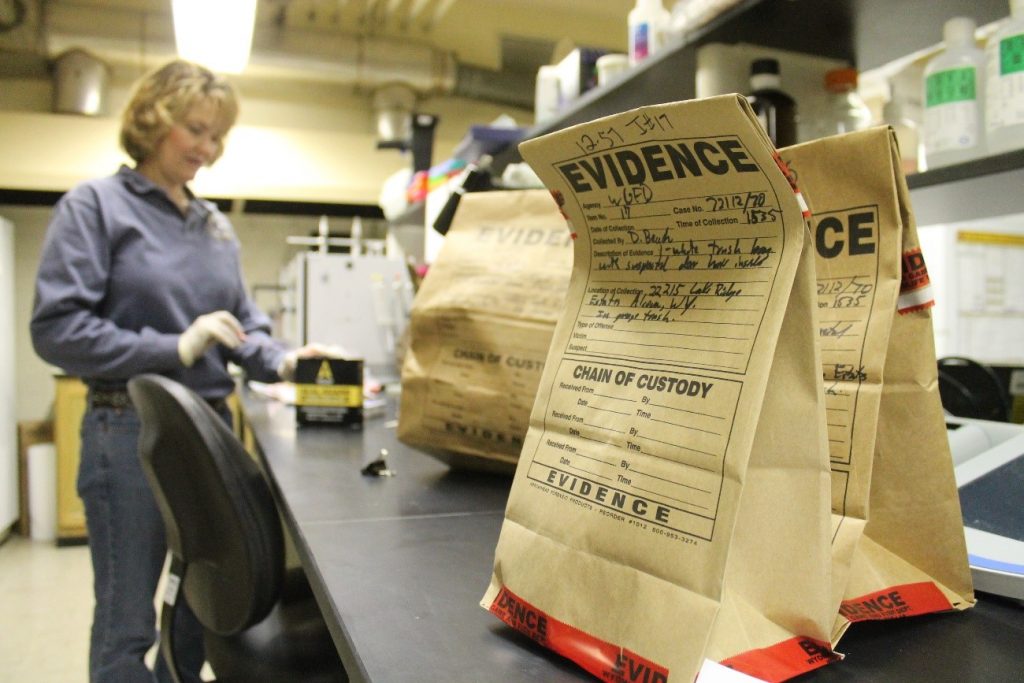American popular literature has been largely dominated in the past thirty years by a handful of writers whose productivity and commercial success have defined their works, as well their public images. In terms of crime, the names that likely spring to mind are those such as Stephen King and John Grisham, but there is a woman there too, also ranking in the best-selling list, who has changed American popular crime culture forever: Patricia Cornwell, creator of hugely popular character Dr Kay Scarpetta.

Patricia Cornwell rose to fame in the early 1990s with her debut crime fiction novel Postmortem (1990). Only one year after its publication, Cornwell became the first author to ever win the prestigious Edgar Award, John Creasey Memorial Award, Anthony Award, and Macavity Award in the same year. Praise for the upcoming writer, who had previously been working as a journalist, did not only come from her professional peers but from the general public too. Doctor Kay Scarpetta, Chief Medical Examiner for the State of Virginia, entered the lives of American readers only to conquer the hearts (and minds) of avid crime fiction readers who were eager to move on from the hard-boiled tradition and the procedural form. Almost thirty years—and twenty-four novels—later, Dr Scarpetta is still solving crimes and earning Cornwell a respectable living.
The relevance of the Kay Scarpetta series relies not only on their inauguration of a new crime fiction subgenre—often termed ‘the forensic thriller’—which can be rightfully considered a prelude to the CSI boom in the 2000s, but also on the massive success of a female-led series of novels in which forensic medicine (a traditionally ‘male’ field) is prominently featured. Over the years Cornwell developed a productivity similar to other American popular literature writers, but her work started to lose quality in the eyes of the critics and the public. For many, the likes of King, Grisham, and Cornwell are just ‘paperback trash lit’ or ‘airport literature’: shallow literature we consume without thought. These labels issue a verdict that indicates a clear separation between high culture and popular culture in an effort to differentiate between ‘real’ works of art and mere capitalist products made for mass consumption. But is this fair?
 The quick answer is: no. Popular crime literature offers a reflection of social developments such as gender equality, language, detecting methods, and even social prejudices. However, it is sometimes difficult to go beyond the ‘best-selling’ label and really take a novel for what is worth. In the case of Cornwell, her best-selling status along with her gender offered a dangerous combination by which her works have been wrongly perceived in the past two decades. However, a retrospective view will offer some insight into the real value of Cornwell as a writer and of the Kay Scarpetta series.
The quick answer is: no. Popular crime literature offers a reflection of social developments such as gender equality, language, detecting methods, and even social prejudices. However, it is sometimes difficult to go beyond the ‘best-selling’ label and really take a novel for what is worth. In the case of Cornwell, her best-selling status along with her gender offered a dangerous combination by which her works have been wrongly perceived in the past two decades. However, a retrospective view will offer some insight into the real value of Cornwell as a writer and of the Kay Scarpetta series.
 Firstly, Cornwell had the bravery of imagining a female Chief Medical Examiner in a Southern conservative state in 1990, at a time when forensic medicine was still in its infancy and the general public was not familiar with how DNA and profiling worked (let’s remember here the forensic evidence presented in the O.J Simpson case and how it was dismissed and misinterpreted). If popular literature is designed for a wide audience, then this audience’s acceptance of Scarpetta as a fictional main character throughout the series signals an evolution in professional gender roles, offering some light at the end of the tunnel. And if a female-led forensic thriller series is made successful by millions of faithful readers, some of whom must likely be women, and young women at that. For many of them, Kay Scarpetta’s long hours at the morgue, hectic schedule, and unapologetic success has functioned as an inspirational tale of female empowerment and agency. Furthermore, her experience as an adult is taunted by her past as one of the few women studying Medicine, a situation that she is happy to see changing. Partly thanks to Cornwell and to Scarpetta, we have seen women access traditionally male fields of higher education and now women have become a majority in medical schools throughout the US and the UK.
Firstly, Cornwell had the bravery of imagining a female Chief Medical Examiner in a Southern conservative state in 1990, at a time when forensic medicine was still in its infancy and the general public was not familiar with how DNA and profiling worked (let’s remember here the forensic evidence presented in the O.J Simpson case and how it was dismissed and misinterpreted). If popular literature is designed for a wide audience, then this audience’s acceptance of Scarpetta as a fictional main character throughout the series signals an evolution in professional gender roles, offering some light at the end of the tunnel. And if a female-led forensic thriller series is made successful by millions of faithful readers, some of whom must likely be women, and young women at that. For many of them, Kay Scarpetta’s long hours at the morgue, hectic schedule, and unapologetic success has functioned as an inspirational tale of female empowerment and agency. Furthermore, her experience as an adult is taunted by her past as one of the few women studying Medicine, a situation that she is happy to see changing. Partly thanks to Cornwell and to Scarpetta, we have seen women access traditionally male fields of higher education and now women have become a majority in medical schools throughout the US and the UK.
Secondly, but no less importantly, comes the success of Cornwell as a writer and as a woman. She has reinvested the economic massive success derived from her Kay Scarpetta series in her passions, which include anything from helicopter and ballistics to an obsession with the real identity of Jack “The Ripper”, about whom she has also published some works. However, Cornwell’s public image has been tainted by her romantic involvement with a married FBI agent, Margo Bennett, and the attempted murder of said agent by her ex-husband, Gene Bennett. Cornwell has also struggled with the relationship between her homosexuality and her public persona to the point of hiding her marriage to psychiatry professor Stacy Ann Gruber. Her numerous health problems such as depression and anorexia nervosa, which she has openly addressed, as well as her legal struggle to regain control over her finances after their disastrous management by her lawyers have made Cornwell a familiar face to tabloid and society pages readers. Hence, this public persona has sometimes been used against her as a professional writer even though her works have become part of the history of American popular literature.
So, whether forensic thrillers are to our liking or not, and whether we agree with Cornwell’s sometimes problematic public persona or not, we must recognise her contribution to American popular literature, as well as to the popularisation of forensic science in leisure products. And even though the latest reviews of the Kay Scarpetta instalments have deemed them stale and full of clichés, we are talking about a series that has been running for almost thirty years. So, while we openly embrace the Maine writer as the main character in King’s works, let’s regard Cornwell’s work with such deference and accept the challenges that come with age and massive success too. Even in 2017, it is still a joy to revisit her earliest work and try some old school detecting where mobile phones did not exist, no one knew what DNA could reveal, and two women’s strength and stubbornness changed the way we see crime, fiction, and forensics.
____
Bio:
Elena Avanzas Álvarez is a last-year PhD candidate at the University of Oviedo (Spain). Her research focuses on contemporary American crime fiction and forensics, women authors, and feminism. Her work has been published in various international journals, and she is a member of the International Crime Fiction Association, the Crime Studies Network, and the European Association for English Studies (ESSE). Avanzas Álvarez is also a writer and literary reviewer and her work has appeared in the Los Angeles Review of Books, Mystery Tribune, OcultaLIT and Bristol 24/7. She is the founder of Bodies in the Library, a website focused on reviewing and promoting the work of contemporary crime fiction women authors.
You can find her on Twitter at @ms_adler
